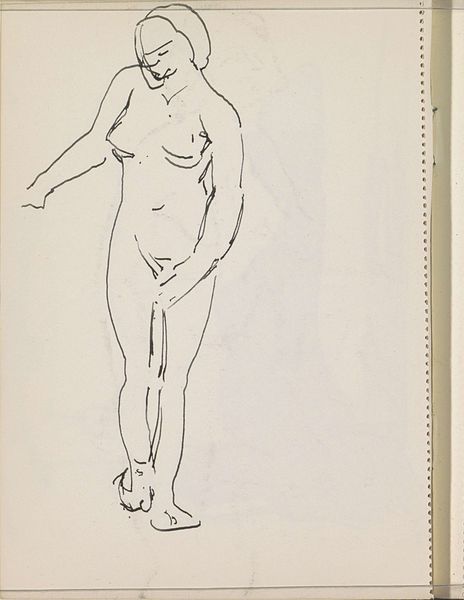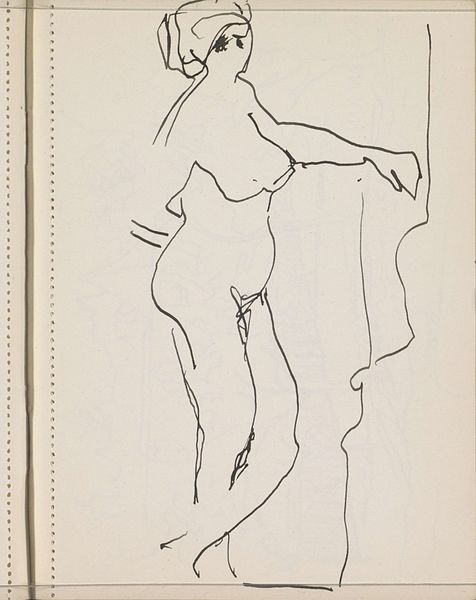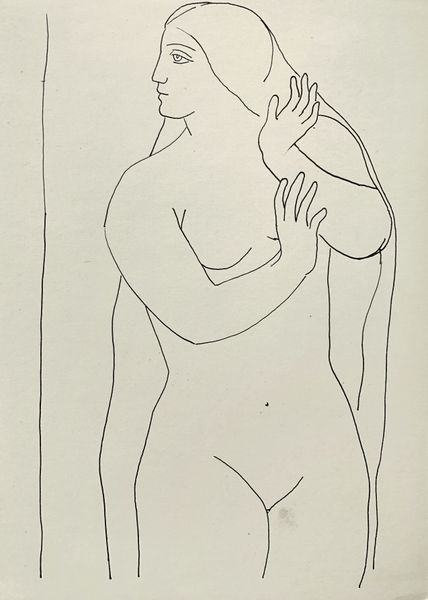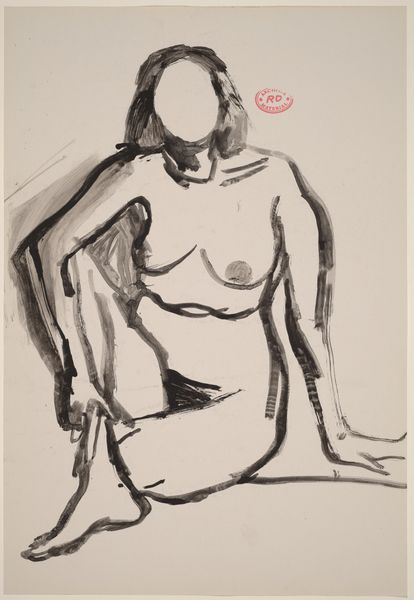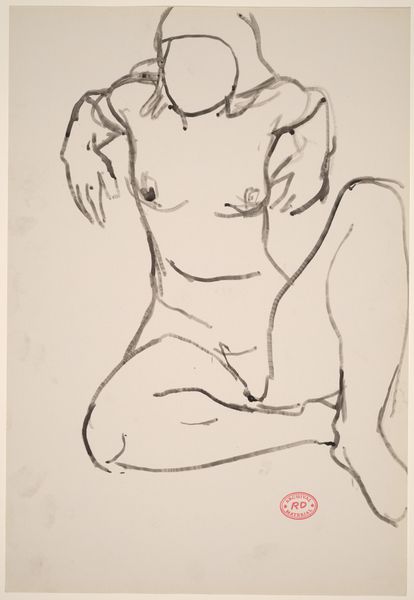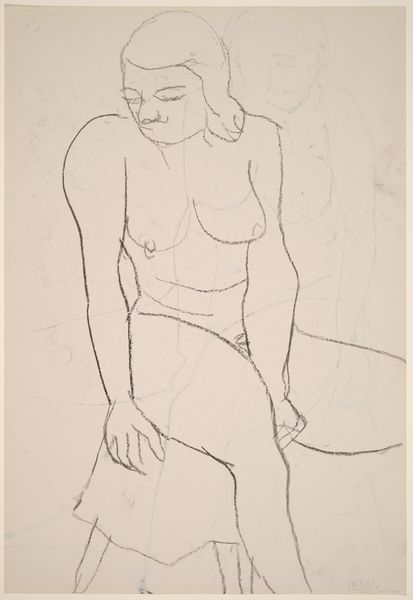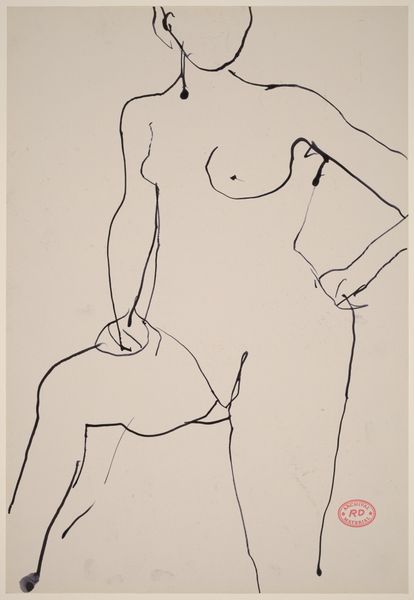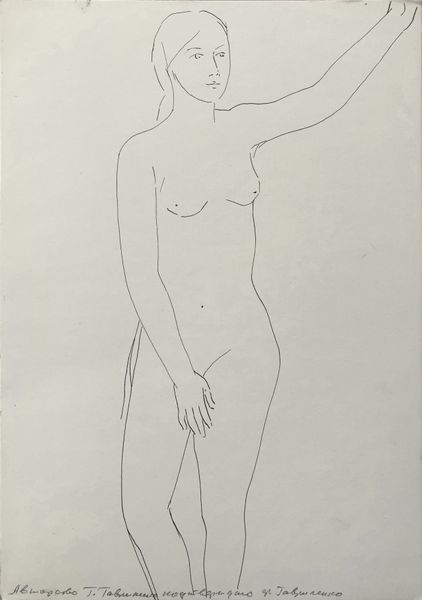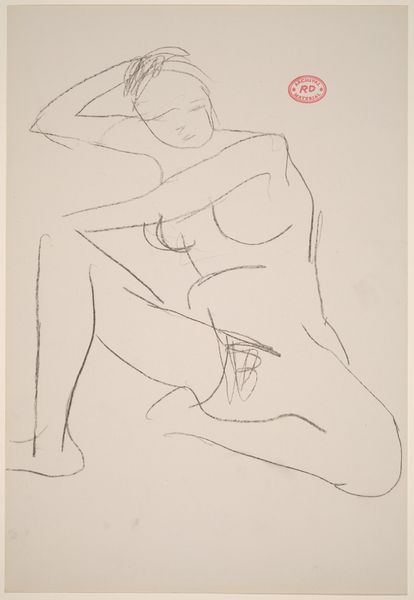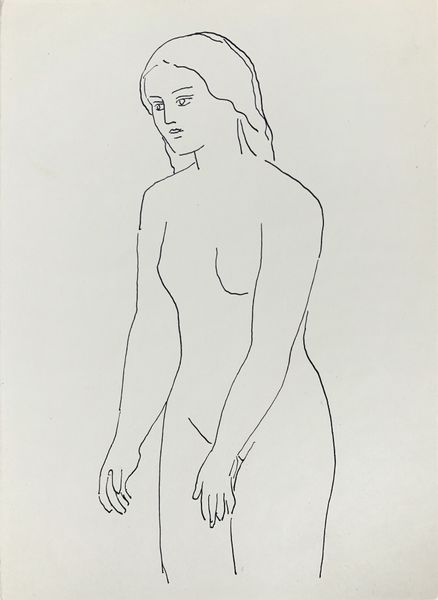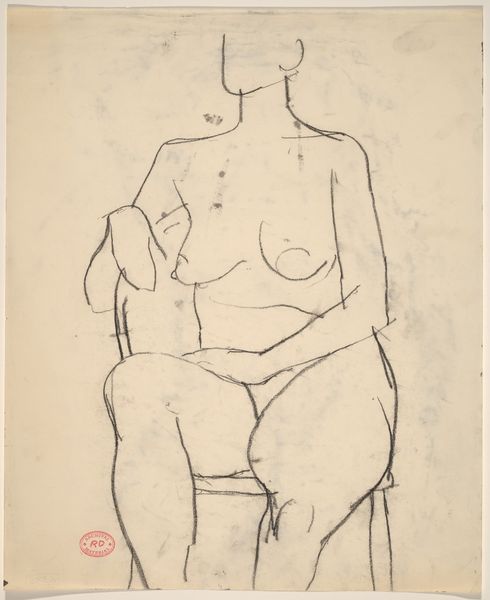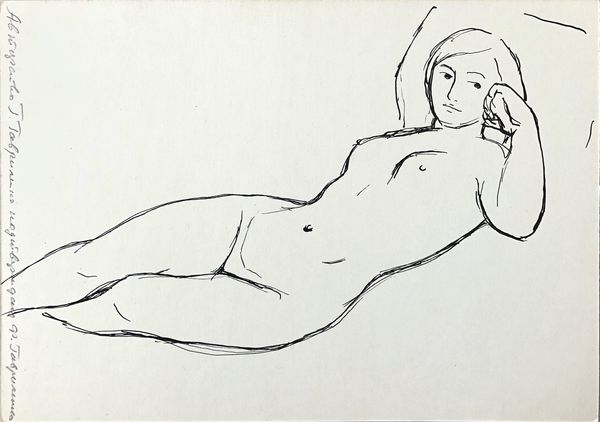
drawing, paper, graphite
#
portrait
#
drawing
#
figuration
#
paper
#
graphite
#
academic-art
#
nude
Copyright: Rijks Museum: Open Domain
Editor: So this is "Standing Nude Woman Leaning on a Chair" by Reijer Stolk, dating from around 1906 to 1945. It’s a graphite drawing on paper, currently held at the Rijksmuseum. I’m struck by how immediate it feels. The lines are so simple, almost child-like. What do you see in it? Curator: Indeed. The immediate visual impression foregrounds line and form. Observe the economy of the line itself, its hesitant yet decisive nature. It’s an exploration of the contours of the human form, devoid of superfluous detail. Note how Stolk utilizes hatching and shading sparingly, directing our focus to the spatial relationships and the internal architecture of the figure. Editor: So, it's more about how the artist captures the *idea* of a body, rather than its actual realistic depiction? Curator: Precisely. Consider the angle of the chair – how its sharp angles play against the curves of the figure. The composition utilizes the juxtaposition of geometric forms with the organic to enhance its semiotic value. It encourages the viewer to reflect on notions of space, mass and equilibrium. Editor: It makes the female body seem like an interesting design, rather than focusing on who she is as a person. Curator: You have a perspicacious understanding. Editor: That's a different way of viewing a nude figure than I expected. I usually consider who the model was, the artist's relationship with her. Looking only at line and form definitely gives a different impression. Thank you. Curator: A rigorous, semiotic consideration of artistic expression affords new levels of understanding. It has been my sincere pleasure.
Comments
No comments
Be the first to comment and join the conversation on the ultimate creative platform.
